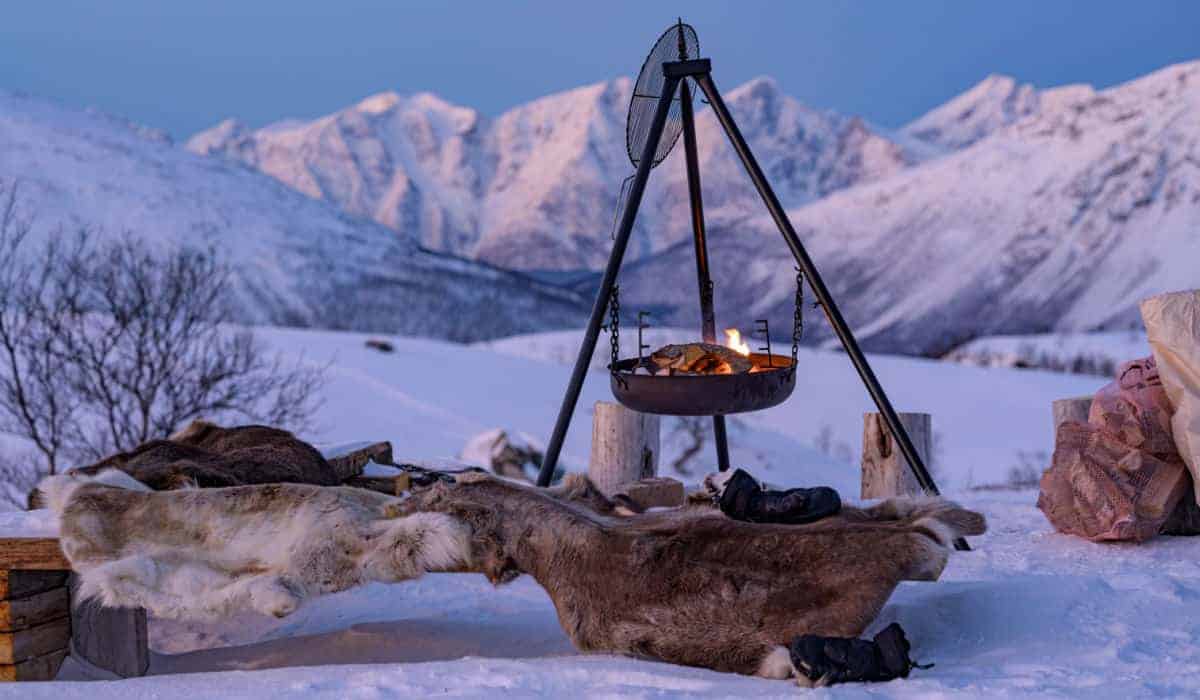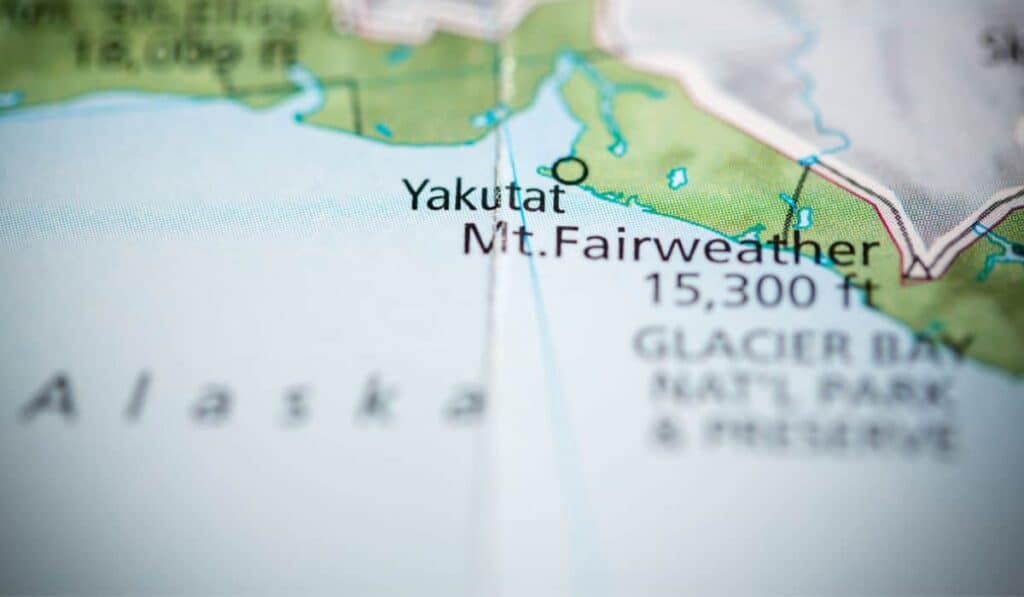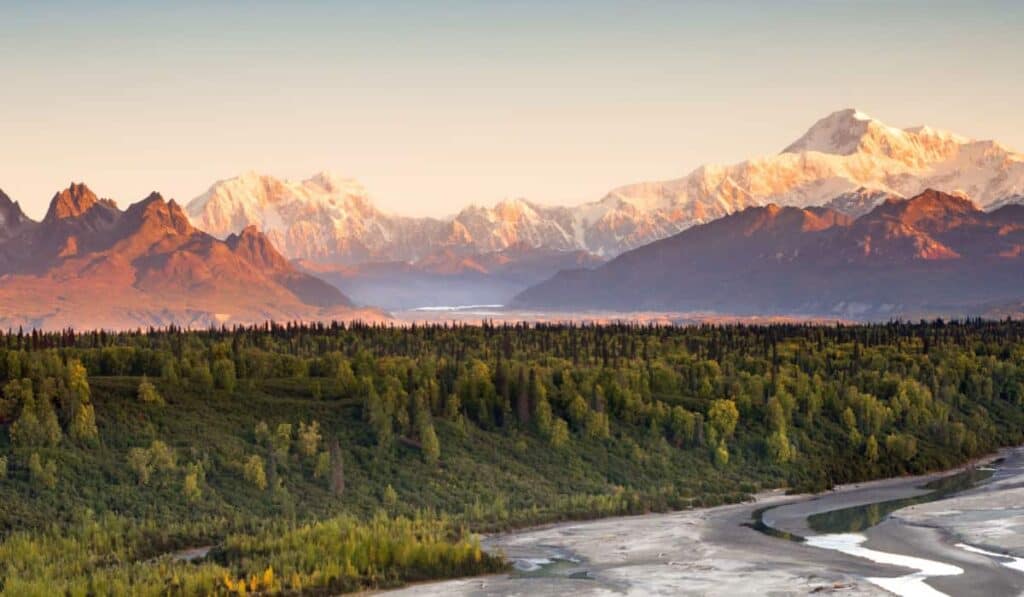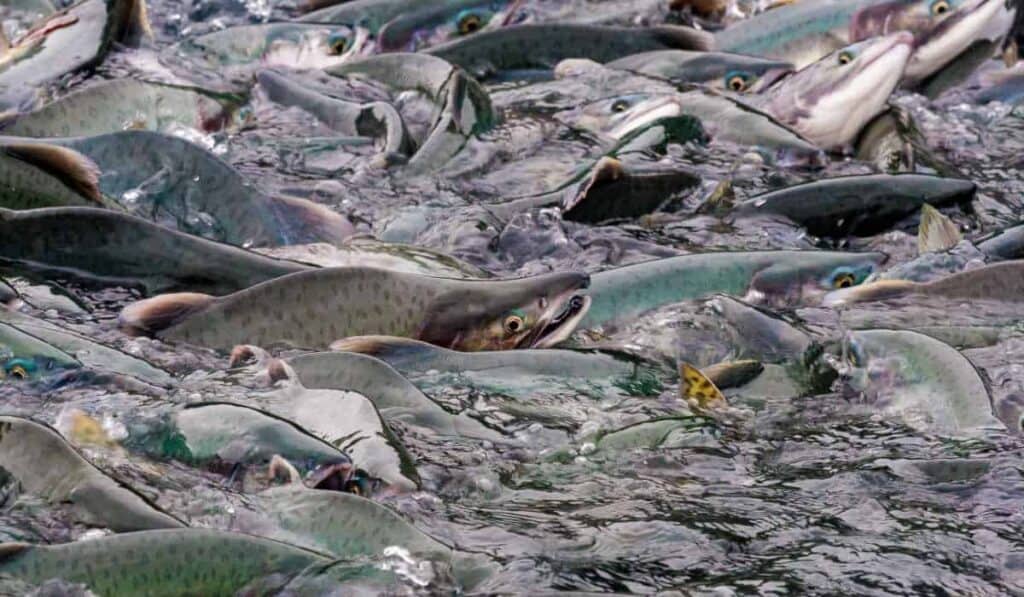One of the many things that Alaska is known for is our amazing assortment of wildlife throughout the state.
There are thousands of different species up here, including 112 types of mammals and (something I didn’t know until someone mentioned it to me last week) over 500 species of birds.
If you enjoy eating meat as much as I do, you may wonder if Alaskans eat every animal native to the state or if it’s even legal to eat all of them.
Let’s take a look at eight different kinds of animals that we have in Alaska and we’ll explore the answers to those questions.
Do Alaskans Eat Bears? What About Polar Bears?
Bears are hunted quite frequently all over the state of Alaska since they are found in nearly every region.
Admiralty Island, one of the biggest in the state, is called Kootznoowoo by the local Tlingit people. This translates to “The Fortress of the Bears,” which is an apt name.

The island is 1,646 square miles and is home to an estimated population of over 1,600 brown bears (also known as grizzlies). With a population density of roughly one bear per mile, Admiralty Island has the highest concentration of grizzlies in the entire world.
Admiralty has more brown bears than the lower 48 states combined. Alaska in total is estimated to have roughly 30,000 bears of all types.
We’ve finally found out that I have eaten! I have had bear meat on several occasions after I was given it as a gift.
The problem is that the meat itself is very bland. On the few occasions where I’ve had it, the person who gave it to me had covered the thing in crushed black peppercorn and other spices, then allowed it to sit and be absorbed.
As for polar bears, they are illegal to hunt in Alaska, except for members of the Alaska Native tribes who have been eating them for thousands of years.
I have never tasted a polar bear, of course, but I can’t imagine it’s too terribly different than a grizzly or a black bear.
Do Alaskans Eat Wolves?
Alaska is one of the few states where it’s still legal to hunt wolves because we have such a high population that they’ll never be in danger of going extinct.
In order to protect the big game populations in Alaska (such as wild moose) from being decimated by roaming wolf packs, the government frequently hunts wolves themselves, as population control is very important.
The state Department of Fish and Game will usually send people out in helicopters, especially in remote areas where access is difficult by other means.
I have personally never done it, but I know people who have eaten wolf meat. I’m told that it can be quite delicious – assuming it’s cooked properly.
The biggest concern about eating wolf meat is that there is a high potential to undercook the meat.
Since wolves eat primarily dead flesh, it’s very easy for them to pick up diseases or parasites from their food.
This means you should always cook wolf meat to an internal temperature of 180 degrees, to make sure you’ve killed all potential bacteria. Almost none of the potential conditions are fatal to humans, but they’ll still make you pretty sick.
Do Alaskans Eat Whales?
You might be surprised to see whales on this list since there are a few species that are endangered, so you might not expect people to eat them.
That’s not the case here, with a few caveats. Whale meat is generally not sold (I have never seen it in all of my years here) and most people are not actually allowed to hunt whales here.
The Alaska Natives who live near the North Slope have been eating whales for thousands of years. They have been given special permission by the government to continue that practice.
They are only allowed a certain number per year, which they take during two separate harvests. They collect thousands of pounds of meat, then freeze it to eat in the winter.
Since I have never been north of Fairbanks, I have never personally tasted it. I do have a few Alaska Native friends, though, whose grandparents have said they enjoyed it.
Traditionally, the Tlingit people in Southeast and a few other Alaska Native groups did not hunt whales but would eat the meat if one washed up on the shore.
Do Alaskans Eat Foxes?
Alaska has a few species of foxes, but they’re not generally eaten, outside of emergencies when it’s the only food available.
I’ve also never had it, but I’m told fox meat doesn’t taste very good and, since a lot of foxes are pretty skinny, there’s not really a lot of meat.

Foxes are most commonly trapped for their fur, which has a variety of uses. After the fur is removed, it is sold for about $100. The proper term for an animal skin sold in this way is a “pelt.”
Do Alaskans Eat Moose?
Moose are one of the most popular animals to hunt in Alaska and for good reason: they’re delicious.
I’ve never personally gone hunting, but I’ve had moose meat dozens of times and in many different forms.
I’ve had moose pot roast, moose stew, moose beef jerky, and probably several other ways that I can’t think of right now.
If you get the chance, you should definitely try moose meat. It’s not really a supermarket thing up here, but there are some specialty stores that carry it.
Moose meat might actually be my second favorite Alaskan wildlife-based dish behind halibut. It really is that good.
Do Alaskans Eat Penguins?
If you already know the answer, don’t laugh. This is actually a very common question that I get from tourists and people from down south who found out I was from Alaska and were curious. The answer to this is “no” for three reasons.
First, under the terms of the Antarctic Treaty of 1959 (the international agreement that means countries can’t go claim land in Antarctica anymore), it’s illegal to eat penguins or their eggs.
Second, penguins don’t live in Alaska. They only live at the South Pole, because polar bears are a natural predator and they don’t have bears in Antarctica.
Finally, according to people who know such things, penguins taste weird and kind of awful. They have too much fat on them since they need to survive the extreme temperatures down there.
So, no, Alaskans do not eat penguins, we don’t have penguins, and even if we did, it is not legal to eat them.
Do Alaskans Eat Walrus?
Walrus is another member of the group I’ve previously mentioned that can only be hunted by Alaska Natives living in coastal regions for subsistence purposes.
The law, The Marine Mammal Protection Act of 1972, allows Alaska Natives in coastal regions to hunt walruses all year long with no restrictions.
It also specifies that every part of the walrus must be used, which didn’t really need to be part of the law.
There are many differences between the various groups that make up Alaska Natives, but one thing they all have in common is that they are never wasteful when it comes to food.
It is considered deeply shameful in their cultures to let any food go to waste, as wildlife and fish are seen as gifts from the Earth. Not using every bit of it would be very disrespectful.
Do Alaskans Eat Seals?
The final member of today’s list is also a member of the group I’ve mentioned. Seals are also only able to be caught by Alaska Natives living in coastal regions.

Speaking of how the Alaska Natives never let any part of an animal go to waste, we had a science fair in middle school that was specifically aimed at Native Alaskan culture, and all of our projects had to be related to that overall theme.
For my project, I learned that Alaska Natives traditionally (and, in some places up north, probably still do to this day) used seal fat oil to keep their food fresh.
They’d cover their berries in it during the summer months, so they could still be eaten in winter. It still works pretty well compared to a refrigerator, as our report found.
Is There Any Way To Eat Protected Animals?
If you saw an animal on this list that is federally protected, but you still want to try it anyway, you might still have a chance.
The law also states that non-Natives can purchase the meat or other by-products of some of these animals from an Alaska Native in a village.
Not all of them can be bought, however. According to NOAA’s website, bowhead whale, Cook Inlet beluga whale meat, and muktuk (whale blubber) are specifically forbidden to be sold, even by Alaska Natives.
That being said, a trip to a coastal village might not be a bad idea, as you might be able to buy or eat some food that is available nowhere else.
Recap and Conclusion
These are just a few of the many animal species that are found in Alaska. As you can see, Alaskans eat a lot of different kinds of animals, but not all of them.
If you count birds as animals, then the answer is definitely no. The raven, for example, is sacred to the Tlingit people and they would never eat one.
There are also a few that can be unsafe to eat under some circumstances. Paralytic shellfish poisoning can happen if clams are collected from a beach that has not been tested for the toxin by the state.
One thing that’s definitely sure is that if you enjoy eating meat and/or fish, Alaska is definitely the perfect place for you. Come on down and have some bear meat or some moose steaks!
Even if you don’t love it, you’ll have an interesting story to tell to your friends and family for years to come.







